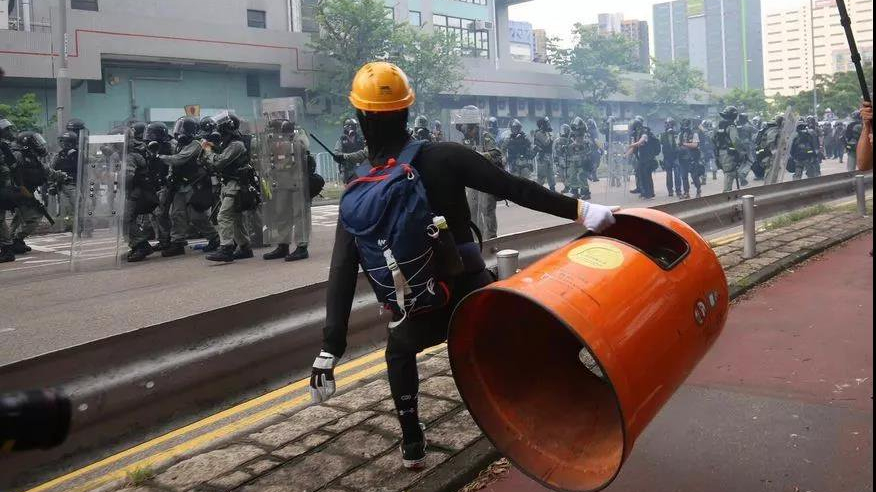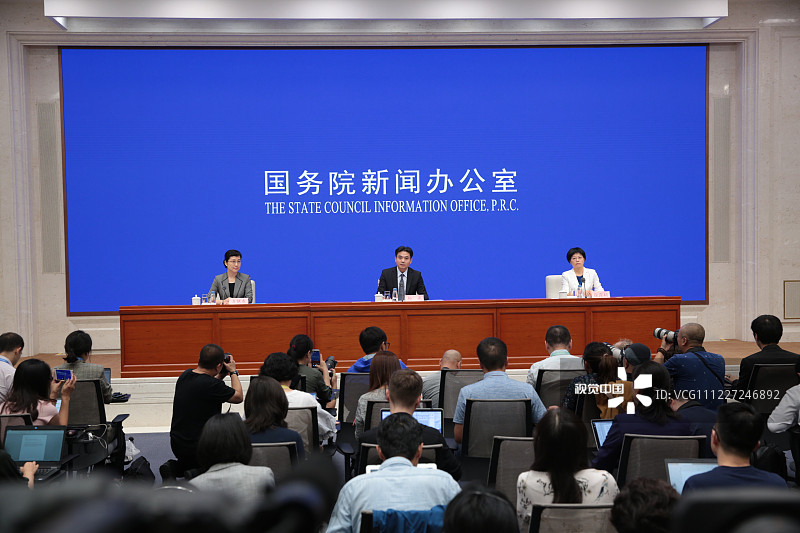

Editor's note: Yao Fan is an opinion editor at CGTN. The article reflects the author's views, and not necessarily those of CGTN.
The Hong Kong protests have persisted for eight consecutive weeks now and over the weekend another round of clashes erupted between the protesters and the police. The continuing tensions make one wonder where this whole series of demonstrations triggered by a proposed fugitive bill will end.
As Martin Jacques, the author of When China Rules the World, put it, China's "One Country, Two Systems" arrangement which defines the relationship between the Chinese mainland and Hong Kong is "an innovative piece of thinking" as it allows two societies, different and distinctive from each other at many levels, to be brought together. However, such an arrangement has proved to be difficult from the outset.
The two systems in question here are what Chinese people would call socialism with Chinese characteristics and a system that was left behind by Hong Kong's former colonizer Britain and which bears a lot of resemblances to the British one.
The difficulty of putting these two systems together has to do with the fact that under the current international system that is to a large extent dominated by the Western narrative, the Chinese way of governing is oftentimes looked down upon. Despite China's enormous economic and social transformations over the past four decades, its political and social systems, seen as "problematic," "undemocratic" and "unsustainable" in Western eyes, are still very much disapproved in the global discourse.
Some Hong Kong people, especially Hong Kong youth who grew up in a society flooded with information that would put the Chinese government in a bad light, tend to despise the system upheld by the Chinese mainland. These people look up to the Western way of living and thinking, believing a Western society with its values of pluralism, freedom of speech and free press and its flourishing political parties is what a society should look like. And they regard the Chinese mainland government as the only obstacle preventing them from reaching that ideal free land.
In this context, China is already the party to blame even before it says or does anything. So in the whole protesting saga in Hong Kong, from the very start, protesters and a considerable amount of Western people never shed the conviction that the mainland government, the Hong Kong SAR government, Chief Executive Carrie Lam as well as the Hong Kong police have been the cause of the massive civil discontent and naturally they have received the most severe criticisms.

The Hong Kong and Macao Affairs Office under China's State Council hold a press conference on the situation in Hong Kong, July 29, 2019, Beijing. /VCG Photo
Western media's reporting of the events is a vivid reflection of this narrative and has also reinforced the perception in some Hong Kong and Western people about who is the real enemy to Hong Kong's freedom.
For example, during the protests over the weekend, the police brutality – such as firing tear gas and rubber bullets – was the focus of attention for Western journalists. However, articles published on Global Times and another WeChat media account associated with China's Central Political and Legal Affairs Commission have criticized them for selective reporting. It was reported that when the police were trying to disperse crowds and maintain order in Yuen Long, the foreign media workers stood in the way, deliberately causing disruptions. At one point one policeman angrily questioned them, "Why don't you show how protesters have behaved?"
So yes, why would they only focus on the police and leave protesters out? And how exactly were those protesters like? Journalists from Global Times took pictures of the batons and bricks used as protesters' tools to initiate attacks or deal with the police. However, the violent side of protesters was not mentioned on Western media, as Global Times pointed out. Moreover, while the police was accused of being heavy-handed in dealing with the protests, what has been ignored is that before the police took any action, protesters had been trying to provoke the police by hurling paint at the police car and throwing bricks at them. They also committed arson at various locations.
Sadly, they were not given as much attention in Western media as the whole story about protests in Hong Kong is one that had already had its heroes and villains set long before everything was going to unfold. The police were already the bad guys and nothing can change that image.
In this battle, whatever is on the opposite side of the Hong Kong protesters, the Chinese mainland government, the Hong Kong police, etc. is indeed beleaguered. They try to work in an environment that is naturally hostile to them. The situation is truly frustrating. It is hard to predict where the protests are heading now.
Nevertheless, it is important for them to recognize that the main tenet behind the "One Country, Two Systems" design is that in this way the country's unity can be preserved. As all China observers would point out that unity sits at the heart of China's political values; the legal arrangement between the Chinese mainland and Hong Kong will not change. A more practical way forward that should thus be pointed out for the more radical and violent wing of the protesters that are only interested in escalating tensions is that while the mainland government respects the way of governing in Hong Kong protesters should also show more restraint and bear in mind that they should not risk undermining "One Country, Two Systems" in any way.
(If you want to contribute and have specific expertise, please contact us at opinions@cgtn.com.)

Copyright © 2018 CGTN. Beijing ICP prepared NO.16065310-3
Copyright © 2018 CGTN. Beijing ICP prepared NO.16065310-3